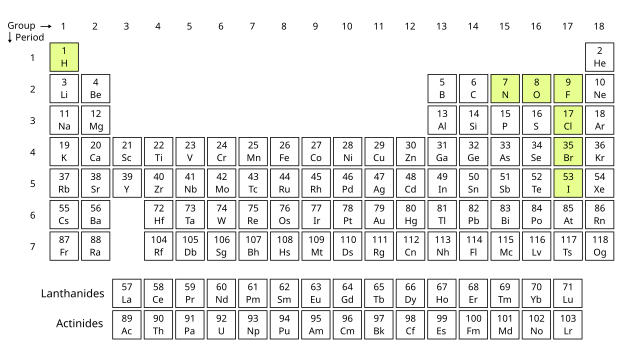arrangement of elements; group I properties (alkalis); group VII (halogens); transition elements
1/20
Earn XP
Description and Tags
noble gases (monoatomic, unreactive, full valence shells)
Name | Mastery | Learn | Test | Matching | Spaced |
|---|
No study sessions yet.
21 Terms
carbonates in room temperature
solid
other name for group 1
alkalis
other name for group 7
halogens
number of bonds (double/triple, etc.)
helps you find which group the element is supposed to be
alkalis
reactivity increases down the group (reactions with water get more vigorous)
melting/boiling points decrease down the group
creates metal hydroxides when reacting with water
density increases down the group
how metallic an element is
decreases as you move left to right across a period
test for hydrogen gas
test: lighting a splint
postive result: (squeaky) pop sound
example of formula for alkali + water

halogens
reactivity decreases down the group
melting/boiling points increase down the group
density increase down the group
state of halogens at room temperature
Fluorine (F): Gas
Chlorine (Cl): Gas
Bromine (Br): Liquid
Iodine (I): Solid
Astatine (At): Solid (predicted)
colours of halogens
Fluorine (F): pale yellow
Chlorine (Cl): green-yellow
Bromine (Br): red-brown
Iodine (I): dark puple/violet
Astatine (At): black
diatomic elements
nitrogen to iodine (the 7 looking thing on the periodic table)

displacement reactions
when a more reactive element takes the place of a less reactive element (chlorine and bromine reacts with aqueous potassium iodide cuz they’re more reactive than iodide)
chlorine uses
water purification (removes bacteria)
element
a substance where the atoms have the same proton number
chlorine reacts with aqueous sodium bromide
chlorine + sodium bromide →
bromine + sodium chloride
chlorine is more reactive than bromine so it will take its original place
test for bromide ions
test: silver nitrate
observations: cream coloured precipitate
halide compound which can be used to detect the presence of water
anhydrous cobalt chloride
potassium bromide (colourless to brown/orange)
potassium bromine + chlorine → potassium chloride + bromine
aqueous sodium iodide reacts with aqueous bromine
transition elements (first row properties)
variable oxidation state (Fe2+,Fe3+)
forms coloured compounds
can be catalysts
high melting/boiling points
high densities
equilibrium mixture
rate of forward reaction equals the rate of the reverse reaction
concentration of reactants and products are constant